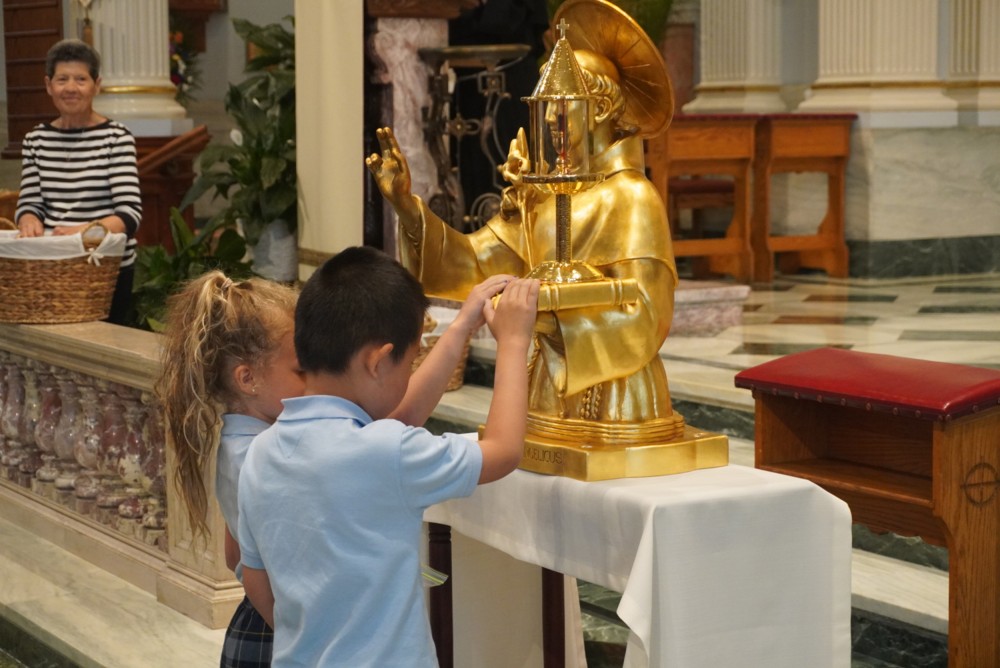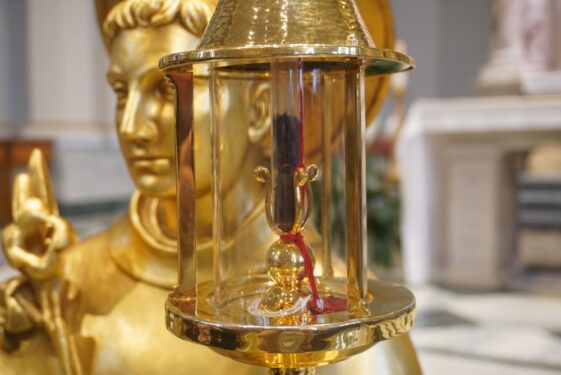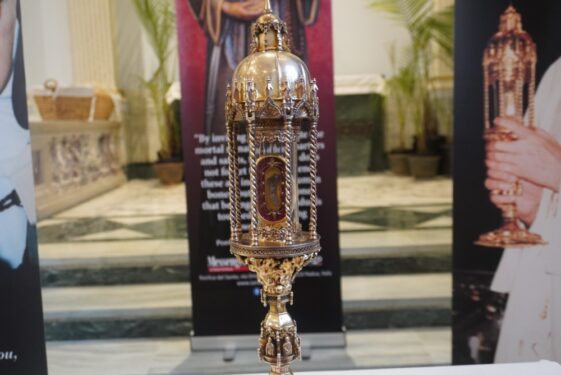
DYKER HEIGHTS — Every Wednesday for the past year, Paige Winters has spent her morning at St. Ephrem Church. The parish academy student is joined by her classmates for a student Mass weekly, so by the end of her eighth grade year she was very familiar with the church and its pews.
But on Wednesday, June 13, for her final Mass as a student at St. Ephrem Catholic Academy, Winters’ routine became a lifelong memory. For the first time, she was able to see and venerate two relics, brought to her and her classmates from Italy.
“I love how many people were here, … now I know a lot more about [St. Anthony],” Winters said.
In celebration of the feast day of St. Anthony of Padua, she and the students at St. Ephrem Academy were visited by Franciscan friars who brought two first-class relics of the saint from Italy: pieces of a floating rib and facial skin.
“This was overall my favorite Mass of the entire year, I think. It was very interesting learning about all these things, and getting to touch the rib of St. Anthony,” said Antonios Askhar, a St. Ephrem sixth grader.
The church is one of many visited by the Franciscan friars from the Pontifical Basilica of St. Anthony in Padua, Italy, during a relic tour in New York and New Jersey, held from June 8 through June 16.
After their visits to St. Ephrem — which included veneration sessions during two celebratory Masses — the relics will go to St. Francis of Assisi Church and St. Patrick’s Cathedral in Manhattan, as well as Most Holy Trinity-St. Mary Catholic Church in Williamsburg.

Considered one of the world’s most popular saints, St. Anthony of Padua was a Franciscan teacher and preacher from the early 13th century. He is the patron saint of lost and stolen articles, is a doctor of the church for his theological knowledge and missionary work, and had a particular love for the poor.
St. Anthony has the potential for much more than helping people find their lost keys, says Father Mario Conte, the traveling companion for the relics.
“I think that St. Anthony is the patron saint of lost things for many people, but we have to think about things that we don’t even realize we have lost. First of all, faith. Faith is the most important thing,” said Father Conte.
Father Conte has traveled from Great Britain to India and beyond with these relics, seeing them as an opportunity to show people how much St. Anthony can provide for the faithful through his intercession, and to teach people about a saint who many have misconceptions about.
For example, St. Anthony of Padua was not Italian, as many believe, but Portuguese.
The relic of the floating rib holds a special significance to the friars, having been venerated by Lucy of Fatima, one of the three children who witnessed the apparition of the Virgin Mary at Fatima, Portugal.

Along with bringing the relic to St. Ephrem, Father Conte also delivered a homily to the students and parishioners during the morning Mass, during which he talked about the importance of connections — and how such a relationship with St. Anthony can enhance their faith.
As is tradition on the feast of St. Anthony, the church distributed blessed bread as a way to remember the saint’s care for the poor.
As part of the curriculum at St. Ephrem Catholic Academy, the younger students are required to do a project on the saints. Many choose St. Anthony of Padua, said Michael Phillips, the school’s principal, so having the opportunity to show the students these relics was particularly compelling.
It’s one thing to read about the saint in a textbook, he said. It’s an entirely different experience to see the church’s history in front of their eyes.
“What I try to tell the students is that it’s innovation through Catholic faith,” Phillips said. “That’s not only learning about our saints and about our religion within our books and within the Bible but bringing it to life.”
